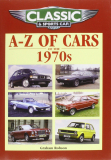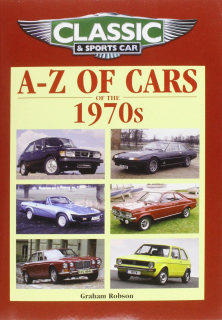Úvod »Automobily osobní a dodávky»Lola » ISO and Bizzarrini
Anotace
The Story of the ISO and Bizzarrini marque is not one that is familiar to enthusiasts generally. Nevertheless, it is a fascinating one, which is dominated by a handful of key men: Renzo Rivolta - successful Italian industrialist who, during the 40's and 50's built the firm of ISO into a highly profitable personal empire, through the manufacture of air conditioning and refrigeration equipment, motor-scooters, the famous Isetta microcar, and the ubiquitous Isocarro - that curious little 3-wheeled transporter which once was so much a part of the everyday Italian scene. Giotto Bizzarrini - famous automotive engineer, well-known for his work on various projects, most notably the 250GT SWB and the legendary 250 GTO. In 1961, he was hired by Rivolta to assist with the chassis design for the forthcoming ISO Rivolta GT, and subsequently the Grifo, an offshoot of which was to become the car bearing his own name. Giorgetto Giugiaro - just starting out at Bertone, the Rivolta GT was one of his early styling jobs. The immortal Grifo is widely recognised to be one of his masterpieces, and he later was responsible for the body design for the Fidia saloon, while working at Ghia. Piero Rivolta - took over the reins of the ISO company on the death of his father in 1966 while still in his early 20s. He ably guided the firm until the Rivolta family sold out in the early 70s. And what of the cars themselves? Having sold the licence to manufacture the Isetta to BMW, Velam and others, which was probably far more profitable than building it, Renzo Rivolta, himself an owner of various quality cars, decided to produce his own version, with the accent on speed and style combined with reliability. The prototype Gordon GT (later to become the Gordon Keeble) was examined closely. This car was powered by a Chevrolet 327 cubic inch V8 engine which was particularly admired. ISO's version, the Rivolta GT, retained this power unit, together with the classic de Dion rear suspension, but with pressed-steel monocoque bodywork, which lent itself better to the higher production rates envisaged. Unveiled to the press in 1962, the Rivolta GT made a very favourable impression with its combination of understated good looks, speed, comfort and handling, as evidenced by the road tests of the time. Production continued until 1970, with just under 800 examples being produced. At the Turin show of 1963, two new ISOs were displayed. Based on a shortened Rivolta GT chassis, the new Grifo A3L berlinetta epitomised all that was the finest in Italian GTs of the era. Low, wide, and dramatically good looking, the production version was hand-made in small numbers until the company's demise in 1974, with some 412 built. The fastest car tested by Autocar up until 1966, it could top 160mph, with later versions powered by Chevrolet's 7-litre big block able to lay claim to the title of world's fastest production car. Just 90 of these brutal monsters were made. The other car on display in 1963 was a competition version of the Grifo called the A3C. A very aggressively styled machine, it was designed for endurance racing, and thus was a project close to Bizzarrini's heart. With the familiar ISO underpinnings but with the engine moved even further back in the frame, the A3C went on to record modest successes during 1964 and 1965, notably winning its class at Le Mans on both occasions and finishing ninth overall in 1965, without any factory support. Through a complicated deal with ISO, Bizzarrini went on to produce these cars, badged as Bizzarrinis, at his small Livorno works. A futher project based on a scaled-down version with an Opel 2-litre engine, came to nought. Something like 150 Bizzarrinis of all types were produced up to 1968 when the company finally closed its doors. Meanwhile, in 1967 ISO entered the luxury saloon market with the S4, later to be called Fidia. The only ISO styled at Ghia, it was based on a stretched Rivolta floorpan and marketed as the world's four fastest seats. With a top speed of up to 145mph it certainly had a legitimate claim, at least until the advent of the Jaguar XJ12. Only 192 examples were built between 1967 and 1974. What was to be the last new design from ISO was shown at the 1969 New York Auto Show. Essentially, an updated version of the Rivolta GT, the new ISO 2+2 called Lele was styled by Marcello Gandini at Bertone. Powered at first by 327 and 350 Chevrolet engines, and from 1972 by Ford Cleveland 351s, the Lele proved that there was plenty of life in the 1962 designed chassis yet. By the factory closure, about 300 had been completed. Sadly, following the change of ownership, and with sales severely hampered by the world oil-crisis, the ISO firm quietly died in 1974. This portfolio of articles traces the life & times of those rare Italian exotics, ISO & Bizzarrini. The story is told through new model releases, road tests, drive reports and historical pieces. Models covered: Rivolta, Grifo, Fidia and Lele plus the even rarer Bizzarrinis. A total of 208 fully illustrated pages.























